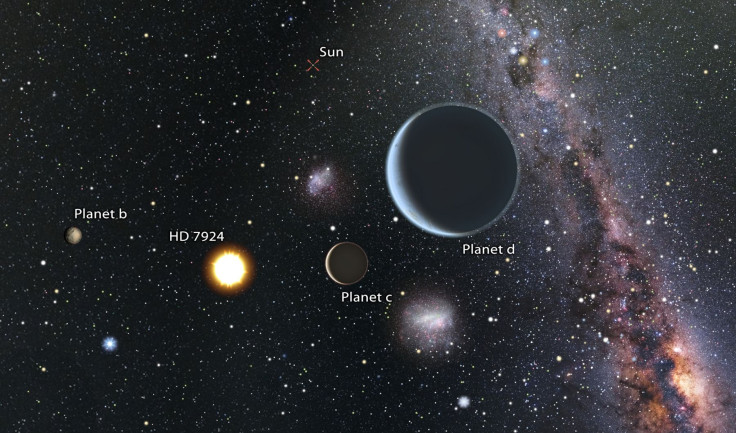Super-Earth’s Atmosphere Is More Like That Of The Sun Than A Planet, Scientists Reveal
Thanks to Kepler Space Telescope, astronomers have been making several discoveries and looking into the vast universe for signs of extraterrestrial life. After having stumbled upon a planet known as Super-Earth or sub-Neptune, scientists for the first time, have observed the atmosphere of one of the mysterious planets, now called GJ 3470 b .
They revealed a light atmosphere composed of hydrogen and helium, which resembles the composition more of a star than a planet. The team of researchers led by Bjorn Benneke of the University of Montreal, Canada described the GJ 3470 b to be unique, unlike any other planet in the solar system. He said the planet weighs 12.6 times the mass of Earth, far below Neptune that is about 17 times Earth’s mass.
“It also takes only three days to circle its star, which is a dim red dwarf, much cooler than our own Sun,” Benneke said. “Super-Earths and sub-Neptunes can cover a wide range of planet types, from massive rocky worlds a few times Earth’s size to relatively tiny gas planets, with room in the middle for planets made of ice or water,” he explained.
Experts, according to Discover Magazine, say such planets have deep atmospheres of hydrogen and helium, similar to the giant planets in Earth’s solar system. However, Earth’s atmosphere is thin and made up of heavier gases like nitrogen and oxygen. In a statement, Benneke said they expected to find an atmosphere strongely enriched in heavier elements like oxygen and carbon that create abundant water vapor and methane gas. “Instead, we found an atmosphere that is so poor in heavy elements that its composition resembles the hydrogen and helium-rich composition of the Sun,” he said.
Now scientists are trying to explain how such a planet would have formed. Benneke said that when astronomers see a planet orbiting so close to its star, they assume it to have formed farther away in the depths of the solar system. In regards to GJ 3470 b, Benneke says they think it may have formed close to its star, inside a boundary called the frost line where heavier materials (oxygen and carbon) reside. “The planet could have formed its solid, rocky core but picked up only light gases for its atmosphere,” he said.

In 2017, scientists had detected the atmosphere of an earlier discovered super-Earth called GJ 1132b, which is located about 39 light-years away.
© Copyright IBTimes 2024. All rights reserved.





















